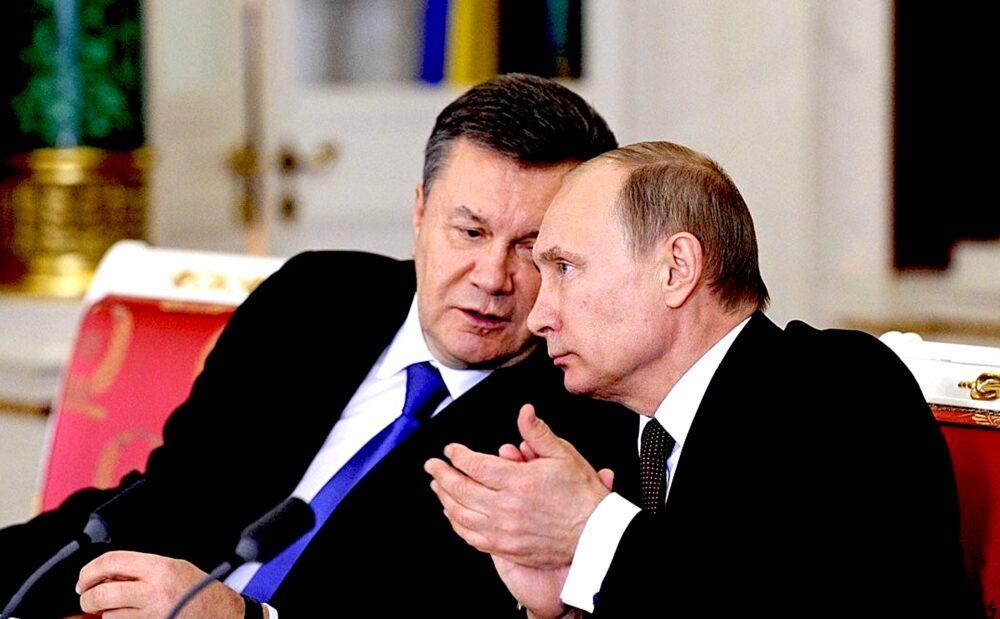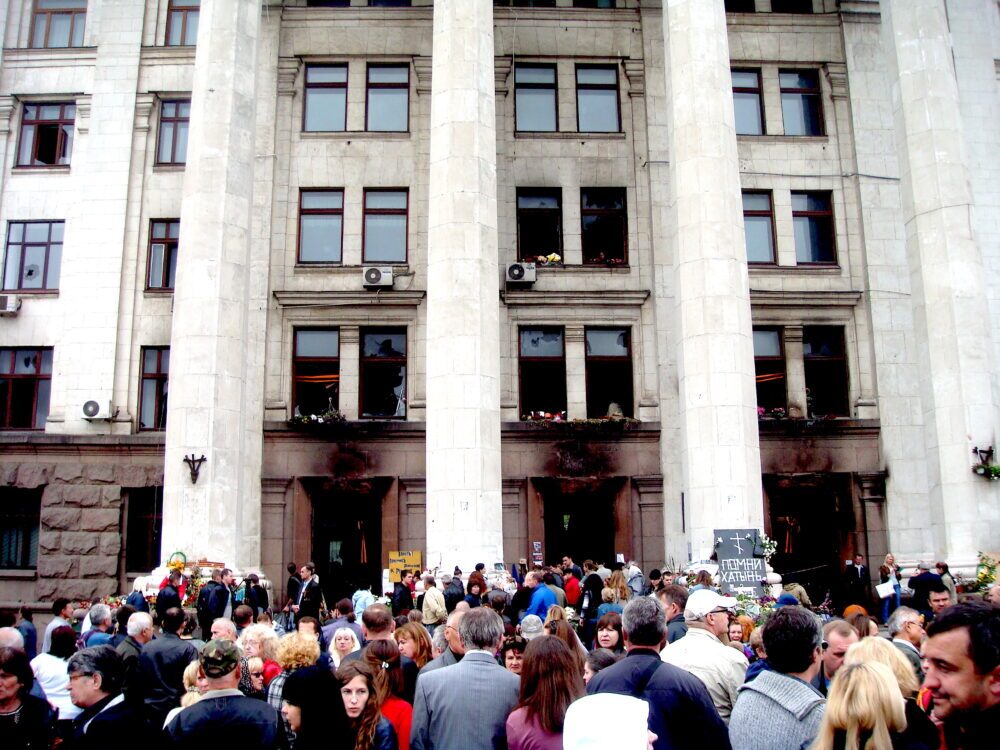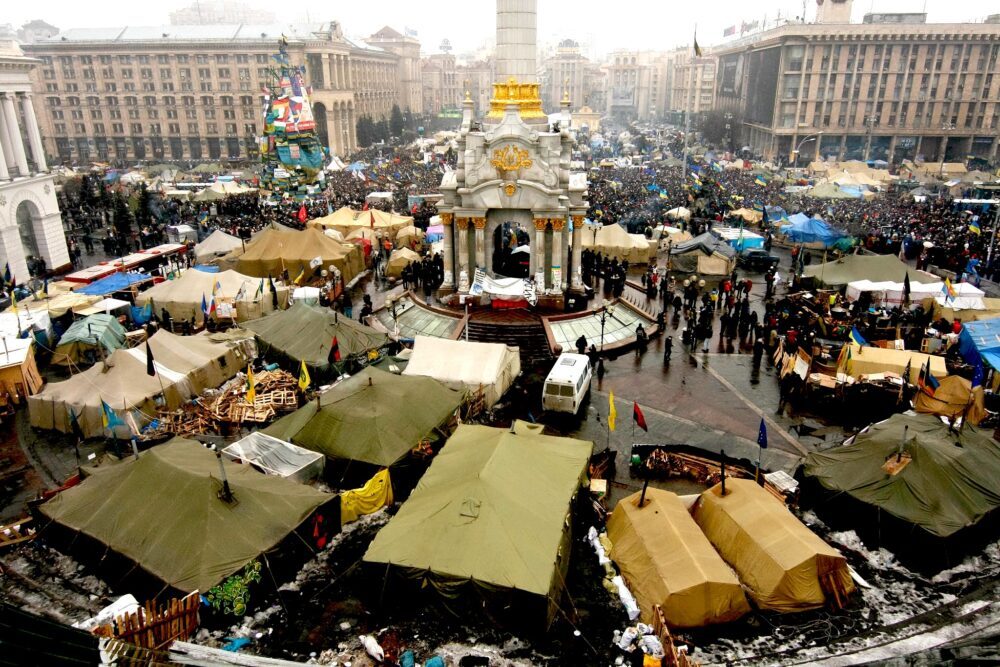6 mins read
How President Trump Is Well Placed to Secure a Deal with Russia to End the War
President Trump, not held back by dissenters in his own party, appears strongly placed to agree a deal with President Putin.
9 mins read

With the conflict in Ukraine marking its third anniversary, and with no sign of it abating anytime soon, it is worth going deep into its causes and the trajectory of events leading up to it.
This is to push back against a narrative shaped by Western ideologues so shallow that it has been embarrassing to behold.
Ever since the coup in Kiev in early 2014 — a coup materially and politically supported by Washington and its European allies — succeeded in toppling the democratically-elected government of Viktor Yanukovych, there was a grim inevitability with regard to what unfolded on Feb. 24 2022.
From the Kremlin’s perspective, Russia’s military campaign amounted to a long overdue counter against Western aggression in the form of the eastward expansion of NATO, to the point where it had begun to pose an unacceptable threat to the country’s security.
Russian President Vladimir Putin and the Kremlin had over many years been nothing if not relentless in sounding warnings in this regard. Those warnings, however, fell on the deaf ears of those resolute in their belief in the supposed verities of Western hegemony in the wake of the collapse of Soviet Communism in the early 1990s.
In the last analysis, empires are entities that create their own reality when secure in their power. However when that power wanes and weakens, as it must, what the proponents of empire consider reality is revealed to be the product of magical thinking.
It was precisely this shifting dynamic which produced the shock-horror in London, Brussels and Washington in response to Putin’s decision to embark on a military solution to what had become a zero sum game.
Centrifugal Tensions
Author and historian Richard Sakwa provides a forensic exploration of the history of Ukraine and the tension between two competing national identities that underpinned its society prior to 2014.

Sakwa describes this as a struggle between a “monist” Ukrainian notion of statehood and a “pluralist” one, writing that at “the heart of the monist model …is a restitutive understanding of re-established statehood.
In other words, the aim is not to reflect existing realities, above all the different histories of the territories making up contemporary Ukraine, but to restore some idealised vision of that statehood.”
When it comes to the pluralist alternative, Sakwa points out that this model “proposes that the post-Communist Ukrainian state is home to many disparate peoples, reflecting its long history of fragmented statehood and the way that its contemporary borders include territories with very different histories, but that they all share an orientation to a civic Ukrainian identity.”
In a state and society containing such centrifugal tensions, all it required to produce a convulsion so serious it would lead to civil conflict was a spark.
In Ukraine this spark came with the decision of the country’s president, Viktor Yanukovych, to rescind the Association Agreement his government was about to sign with the European Union in November 2013, and instead opt for closer economic ties with Russia as a member of the Eurasian Customs Union, responding to the entreaties and political lobbying of Moscow.
In so doing Yanukovych immediately found himself stuck between the proverbial rock and a hard place. His predecessor, Viktor Yuschenko, had already set Ukraine on the path of closer integration with the West with the objective of eventual EU and NATO membership.
Yanukovych, with the support of the Ukrainian Parliament at the time, abandoned this policy, striving instead to steer a neutral path between East and West. He elevated Russian to the status of an official language in those parts of the country — east and south — where it was popularly spoken.
He did so with a piece of legislation that resulted in violent protests in other parts of the country, thus confirming Ukraine’s intensifying ethnic and cultural divisions.

In response to Yanukovych’s decision to abandon closer ties to the EU in favour of Russia at the end of 2013, protests broke out across the country, mainly in the north and west.
Thousands congregated in Maidan in the centre of Kiev, which became the focal point of what was to become Euromaidan.
Also referred to by its adherents as “The Revolution of Dignity,” Euromaidan is a movement that in early 2014 came to be dominated by ultra-nationalists and neo-Nazis, with violence embraced as the primary means of struggle thereby.
This violence reached its apogee on March 2, 2014, in Odessa, where dozens of anti-Maidan demonstrators were burned alive in the city’s House of the Trade Unions at the hands of Ukrainian Neo-Nazis and ultra-nationalists.

What is not in doubt is that the actions of the likes of Victoria Nuland of the U.S. State Department in whipping up anti-Yanukovych and anti-Russian sentiment during visits to Maidan during this period would never have been tolerated if the shoe had been on the other foot — i.e. if a Russian government official had gone out of his or her way to whip up anti-American sentiment in Mexico or Canada at protests against democratically elected pro-U.S. governments taking place there.
As if not damning enough that Nuland, an official within the government of a foreign power, should visit Maidan to deliver anti-government protestors an unambiguous message of U.S. support, a recording of a telephone exchange between herself and Ukraine’s then U.S. ambassador, Geoffrey Pyatt, raised her perfidy to new levels.
In the exchange, made public in February 2014, Nuland and Pyatt discuss who Yanukovych’s replacement should be in the manner of football coaches selecting a new quarterback. The flagrant negation of Ukrainian sovereignty implied provided an invaluable education in the day-to-day workings of empire.
Under Siege

By January 2014 the Yanukovych government was under siege with no end in sight. The crisis intensified when the Ukrainian Parliament passed a raft of laws delegitimizing the protests.
This only succeeded in bringing even more people out onto the streets and outside the Parliament building itself. By now we were witnessing a similar trajectory to the events of Cairo’s Tahrir Square in 2011 — from which the Maidan protests had obviously drawn inspiration — which led to the fall of the Mubarak dictatorship in Egypt.
The key difference between Egypt and Ukraine, of course, was that unlike Hosni Mubarak, Yanukovych was in possession of a democratic mandate, leaving no doubt that the efforts of a determined section of the Ukrainian people to topple him were both unconstitutional and anti-democratic.
Regardless, by this point the writing was on the wall for the now beleaguered Ukrainian president. Under the pretext of attending a political conference in Kharkov, Ukraine’s second city, he fled across the border into Russia via Crimea on the night of Feb. 21–22, 2014.
If he had not — if he had instead opted to remain in Ukraine as his critics argued he should have — it’s a fair bet he would have suffered the same fate as Libya’s Muammar Gaddafi in 2011, such was the appetite for violence driving what by then was tantamount to an armed insurrection.
To the Maidan protesters, Yanukovych was a Russian puppet, an enemy of everything they held dear as partisans of an ultra-nationalist, anti-Russian Ukrainian identity which held that Ukrainian fascist, Stepan Bandera, was a freedom fighter rather than a Nazi collaborator during WWII.
Viktor Yanukovych’s corruption was not in doubt. In this respect he was merely the latest in a succession of corrupt leaders Ukraine has suffered since gaining its independence in 1991.
However in his case inbuilt centrifugal political forces combined with geopolitical factors to turn the country into a key frontline in an emerging struggle between Washington and Moscow.
This struggle, which has only grown more acute over time, is over whether the world will continue to function on the basis of the unipolarity enjoyed by the U.S. since the end of the Soviet Union, or whether instead it will move forward as the multipolar alternative demanded by Moscow’s recovery from its post-Soviet decline, China’s increasing global economic and geopolitical footprint and determined regional resistance to U.S. hegemony by the likes of Iran, Venezuela and North Korea.
In trying to move Ukraine into their orbit, Washington and its European allies overreached and Russia’s intervention — first in facilitating Crimea’s reunification with Moscow in 2014, then with the official recognition of the independence and sovereignty of the People’s Republics of Donetsk and Luhansk in February 2022, and finally with a wider military operation to demilitarize and de-Nazify Ukraine — was the result.
As things stand, the West has been reduced to a spectator of the consequences of its own disastrous foreign policy. It is a foreign policy which at its malign roots holds that the West is “Rome” to Russia’s “Carthage.”
History will not be kind.
John Wight, author of Gaza Weeps, 2021, writes on politics, culture, sport and whatever else. Please consider making a donation in order to help fund his efforts. You can do so here. You can also grab a copy of his book, This Boxing Game: A Journey in Beautiful Brutality, from all major booksellers, and his novel Gaza: This Bleeding Land from same. Please consider taking out a subscription at his Medium site.